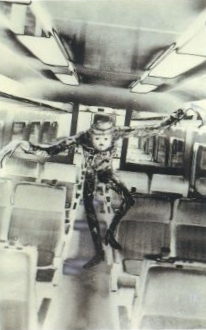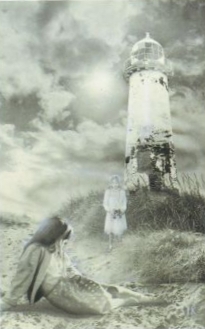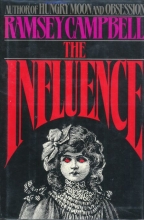When other horror writers were cranking up the tension by delving
deeply into anatomical and physical horror, Ramsey Campbell managed
to do so by sheer writing skill. His 1988 novel 'The Influence'
stands the test of time as an effective novel of horror and terror
that achieves its effects with careful prose, truly imaginative
plotting and a willingness to take his characters as far into
psychological horror as the tale demands. His skill enables him to
create a convincing heaven, an inevitable hell and flesh and blood
humans to move between the two. Most importantly, he's able to use
his language to create souls, then place them in mortal peril. Once
he's done this, any supernatural effects he achieves are as palpable
to the reader as a car crash.
As the novel starts, an unpleasant old woman named Queenie dies.
Her niece Alison inherits the house, but it is Rowan, Alison's
daughter -- and Queenie's "favorite" -- who is the most affected.
Alison's sister, Hermione dies at Queenie's grave, believing that
Queenie isn't all the way dead. Campbell layers the language and lets
loose with scenario that is chilling because we don't see it from the
outside but rather experience it from the inside.
Campbell is up to a couple of very interesting tricks in 'The
Influence'. He offers the reader the chilling experience of seeing a
soul stolen from the point of view of both the victim and someone who
loves the victim. The effect is to double the terror as both Rowan
and Alison witness Rowan's slow and certain displacement from our
world into a convincingly portrayed afterlife that could be heaven,
hell, purgatory or self-imposed prison of madness. Or the madness
could exist solely in Alison's mind, since the choices she sees are
increasingly insane.
Though Campbell's language is always evocative, here he balances
his atmospheric tendencies with a taut plot that keeps the reader
breathless. This is very much akin to what one might expect had Camus
or Sartre ever written a supernatural thriller. There's plenty of
keen philosophical and psychological thinking here, wrapped around a
simple plot that is nonetheless more and more terrorizing. Think 'The
Stranger' with a supernatural twist, or 'Nausea' honed down with a
gleaming steel knife from the kitchen drawer.
As ever, Campbell does a bang-up job of conveying the tensions of
ordinary family life, the bumps in the rhythms that make parents take
notice of the sucking eternity that waits round the corner for any
child. Worries about money, worries about jobs, worries about family
perceptions all hover about like squeaking bats at twilight. Perhaps
they're harmless, but you still don't want them in your hair.
Campbell orchestrates every word to create an organic world of human
perception and self-deception. He an architect of self doubt and when
the walls he builds come crumbling down, only the strong survive.
It's an effective fall.
One hopes that some publisher in the fullness of time will take up
the task of publishing the long-lost illustrated version of this
novel. Back in 1987, J. K. Potter came to England to live with the
Campbells and shoot photos of Ramsey's then ten-year old daughter.
The photos were shot in all the locations where the novel takes
place, and are available in Potter's photographic retrospective
'Horripilations'. In a world where the movie 'The Sixth Sense' blows
away millions with its supernatural suspense, there's room for a new
look at this classic novel.

|

|
|
J. K. Potter's illustrations perfectly capture Ramsey
Campbell's subtle language.
|
These illustrations were found in J. K. Potter's
'Horripilations'.
|


